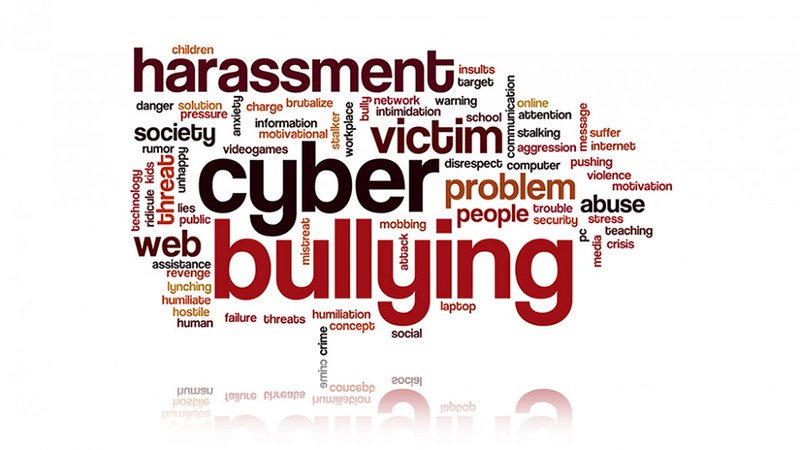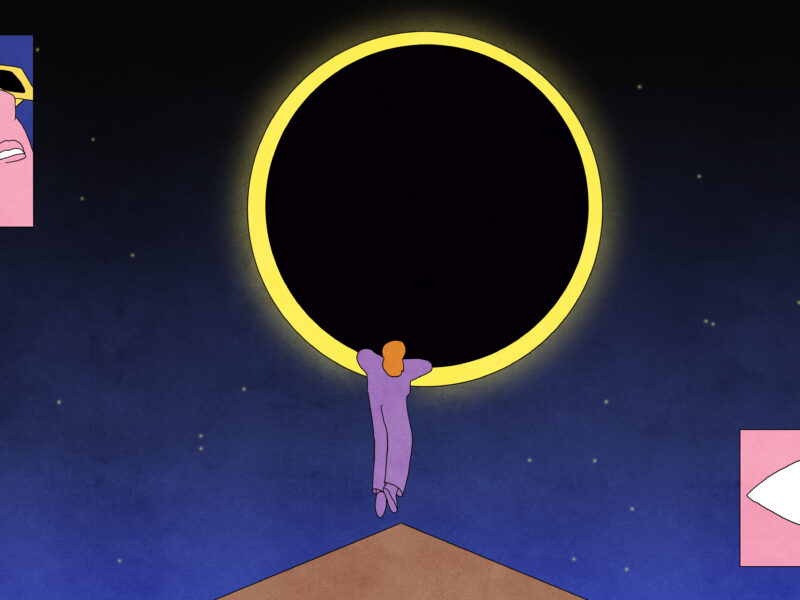The balance between a commitment to free speech and a means of preventing online abuse is elusive.
A few weeks ago, while scrolling Twitter, I came across a brewing controversy about the Netflix film Cuties, about a young girl from a conservative Muslim family in a Parisian banlieue who becomes involved with a dance crew. While director Maïmouna Doucouré—who is French-Senagalese just like the film’s protagonist—has said that the film is “sounding an alarm” about the all-too-early sexualization of girls (partly) through social media, its critics—many of whom seemed not to have seen the film—immediately objected, essentially accusing Doucouré of creating softcore porn and petitioning for the film to be removed.
Janice Turner, a columnist for The Times who is known for her “gender critical” stance, wrote a particularly scathing review of the film. In it, she conflated Cuties with the work of a charity that had, weeks earlier, put out a call for queer black youth in the U.K. to respond to a survey asking about their age, sexuality, location, and vulnerability of housing. The call, claimed Turner, violated safeguards intended to protect children’s privacy.
Turner’s critics, myself included, saw the piece as an attempt to paint the charity as sexualizing children. The sub-hed of her column stated so plainly: “Attempts to sexualise minors are always wrong but a vocal minority of gay campaigners twist concern into prejudice.”
I tweeted at Turner, accusing her of seeing sexualization where it didn’t exist, but she refused to engage on that point, repeatedly deflecting and implying that I didn’t care about safeguarding. I gave up shortly thereafter, but her followers did not: For hours after our brief exchange, they attacked me from just about every angle you can imagine.
There was a handful of reasonable comments that brought up the issue of safeguarding, but most were overtly transphobic: My attackers denied the existence of trans individuals, stated that children have no conception of gender, and implied those who are trans are simply insane. One person called me “batshit crazy,” while another accused me of having told trans people that “suicide is their only alternative to life-limiting drugs.”
Later, when I tweeted about the controversy around Cuties, one of Turner’s lackeys assumed I was a trans woman (presumably because I include “she/her” pronouns in my bio, which is a simple reflection of my gender identity) and began harassing me, calling me a man. Then that person’s followers began harassing me, in public and in DMs. I closed my laptop and curled up with a book.
***
This was not my first experience with online harassment. I am, after all, a woman on the internet—and a public one at that. Public critique for my political views (most often fair) has sometimes resulted in brigading by the critic’s followers; I’ve at times spent entire weekends offline, avoiding Twitter and waiting for the controversy to blow over, as it almost always does.
But this was different. For the first time, I experienced firsthand the kind of outrageous abuse that seems to follow transgender individuals wherever they go online. The next day, I logged back in and tweeted about my experience: “Someone on this hellsite mistook me for a trans woman last night and I got brigaded for a bit (thank you, block button), and holy shit I don’t know how y’all deal with that all the time what the fuck.”
Someone on this hellsite mistook me for a trans woman last night and I got brigaded for a bit (thank you, block button), and holy shit I don’t know how y’all deal with that all the time what the fuck.
— Chillian J. Yikes! (@jilliancyork) September 13, 2020
That tweet received nearly 2,500 likes and retweets and dozens of comments both public and private. Trans followers confirmed that my one-off experience was their daily reality. One person called it “living in hell.” Others shared their tactics (“block early, block often”) and their solidarity.
I was in the midst of finishing the final edits on a book that covers a number of issues related to free speech and social media, so the topic of harassment had been on my mind. But now I began to reflect more deeply on positions I had taken in the past, on my own experiences, and how those two things interacted.
I was raised in New England to be tough and stoic. I didn’t talk much about my emotions growing up, nor did I feel the need. Then, soon after arriving at a university where I knew no one, I went through a breakup that threw me into a major depressive episode, unable to get out of bed. I tried calling my close friends, who were at other universities, but eventually they got sick of my late-night crying jags. I saw the university psychiatrist, who sent me home with pills after talking to me for just five minutes. They didn’t help, but eventually I found my way out of that depression.
From there on out, I was Teflon: I didn’t let anything stick. My hard-won ability to slough off criticism gave me the confidence to work toward my goals but I still struggled, financially and otherwise. I decided that, in order to get ahead, I had to tuck my emotions away.
By the time I became well-known for my work, my belief in free expression was near-absolute. The experiences that had led me to take this position were noble: the state-sanctioned murder of a blogger I’d been emailing with in Iran; the arrest of a friend in Tunisia, then another in Egypt and one in Syria; and helping people I knew through the asylum process in the United States.
For a while, free expression was my religion. I studied government censorship and, later, the role of social media companies in governing our speech. I became one of the first experts on content moderation, and among the first to suggest that perhaps corporations aren’t the best arbiters of speech. For a long time, that stance felt unimpeachable. And then Gamergate happened.
Gamergate, for readers who may not be aware, was a 2014 online harassment campaign. At first it targeted women in the gaming industry who had spoken up about sexism and misogyny in their field, but later it broadened to target loads of other women. Many say that it was a precursor, or an early warning, of the alt-right brigading we see online every day now.
I ignored it at first. I was in Australia to give a series of talks; upon my return to San Francisco, I had two weeks to vacate my apartment and move to Berlin. It was not an easy time (there was plenty else going on beneath the surface that I’ll save for an eventual memoir). Since my colleagues were following Gamergate, I allowed myself to block out both the phenomenon and the feelings that the incident raised for me. Eventually, I was asked to comment and—still not having quite caught up on the details—I did, deflecting to talk about the importance of not allowing the Mark Zuckerbergs of the world to define acceptable speech. I argued that what we really needed were better tools that would enable users to control their own experiences.
Over time, I recognized that I hadn’t given the victims of Gamergate their due. I focused harder on looking for solutions that would both preserve free expression and ensure that harassers—and the pain and silencing they cause to those they target—wouldn’t be tolerated. But I did so quietly, behind the scenes, unsure of what to say. I knew that the tech companies’ failure to take action was partly due to my prior statements on free speech.
This latest incident over Cuties brought my previous missteps into clear focus. I still believe, as I write in my upcoming book, that corporations have far too much power over our speech, and that we, the people, should have the ultimate say in what is or is not acceptable expression. At the same time, I now understand that too many of us—on all sides—treat our perspectives as religion. We are dogmatic and inflexible.
What I realized from the brigading I experienced a few weeks ago, and the conversations that took place in its aftermath, is that we must always remember to be compassionate. This is important not just for others but for ourselves as well. I now realize that part of the reason I once found it so difficult to express compassion for victims of harassment was that I was burying my own feelings, and thus couldn’t empathize with people who lacked my ability to grow a thick skin. I could intellectualize the harm of harassment, which I most certainly recognized as harm, but I found it nearly impossible to put myself in others’ shoes.
Some of my well-known critics have themselves experienced intense harassment. And yet, they too have taken an approach that feels a lot like bullying—or at least punching down. To be sure, public figures should be criticized when they say something awful, particularly when they have the privilege of access to a massive platform like the New York Times Opinion page (I am thinking of the notoriously thin-skinned columnist Bret Stephens, but there are many like him). But we should also be careful to remember the humanity of others—especially when they’re willing to engage in discussion about or account for their mistakes.
When it comes to harassment online and what to do about it, I don’t have all the answers, but here’s what I do know: We need to listen to people when they are describing their lived experience. This is particularly true of queer and trans individuals, and people of color. We need to think about holistic solutions that start with education. We need to teach people how to stick up for victims, and how to help them fight back. And we must create better tools and architecture that pre-empt those who would engage in harassment and brigading.
I am fine with booting serial harassers off social media platforms, but we also need to be careful about any solutions that fail to consider free expression. In my experience, companies all too often come at harassment with a hammer, whacking not only those who are causing real harm, but also those who are engaging in counter-speech, or sharing their experiences while quoting their harassers. This is harmful too, and we should not accept it as a reasonable tradeoff.
There are many partial solutions, but we must be wary of anyone who claims to have a silver bullet; and while there are many worthy ideas out there, each has significant tradeoffs. Nor can we simply ignore harassment or wish it away. Our societies are increasingly divided, a fact that leads to more vitriol, more anger, and more hate. Social media is part of the problem, but it isn’t the whole problem. What we need is to take the holistic view, to see that social media, its architecture and design, maximize controversy for profit, and that there will never be a technological solution to stop online hate and harassment, because it is rooted not in code, but in human behavior. We cannot separate “real life” from “online.” And so, whatever approach we take to combat that which ails us must be rooted in compassion.



